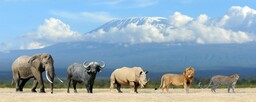16. Evolution or the gradual development of species
Contents
16.1 The history of life
There has been life on Earth for about four billion years. During this time, a huge number of species have evolved and become extinct.
Life was very simple in its primitive days. The organisms were microscopically small, single-celled archaea and bacteria. Gradually single-celled organisms developed into multicellular organisms.
These organisms gradually evolved into more complex multicellular organisms such as plants, fungi, and animals. All life was in the water until about 400 million years ago, when life began to move from sea to land.

Dinosaurs are the most well-known extinct group of animals.
The gradual process by which different kinds of living organisms are believed to have developed from earlier forms over time is called evolution. Studying fossils, or remains of organisms found in old rock formations, produces information about the process of evolution by showing what life looked like millions of years ago.
By comparing the structures of organisms and the evolution of individuals, we can see how closely or distantly the species are related to each other. In recent decades, comparisons of the genetic material of all organisms, DNA, have become the most important means of studying evolution.
16.2 The eras of life
 Study the table on the right.
Study the table on the right.
The history of life on Earth can be divided into four geological eras. They are
- the Precambrian era,
- the Paleozoic era,
- the Mesozoic era,
- and the Cenozoic era.
The first cells and multicellular organisms developed during the Precambrian era. The first vertebrates, fish, began to develop in the water only about 600 million years ago. Dinosaurs ruled the Earth during the mighty Mesozoic era. Birds and mammals became the dominant life forms during the Cenozoic Era. The modern human species has developed only during the past million years.
Watch the video to find out more about the prehistoric timeline.
| Era | Millions of years ago | Most important events | New organisms |
|---|---|---|---|
| The beginning of life | 4 600 | The first cells emerged. | Prokaryotes: archaea and bacteria |
| the Precambrian era | 4 600 – 550 | Photosynthesis provided energy for animals. | Eukaryotes, the first multicellular organisms |
| the Paleozoic era | 550 – 250 | In the beginning the life was only in the water, where fish evolved. Land-dwelling animals, such as amphibians and insects, developed towards the end of the era. |
E.g. fish, amphibians, moss, ferns |
| the Mesozoic era | 250 – 65 | The era of reptiles. | Reptiles, birds, mammals, angiosperms (flowering plants) |
| the Cenozoic era | 65 – | The diversification of birds and mammals. | Humans (5 million years ago) |
16.3 Gallery: The beginning of life
16.4 Gallery: The Paleozoic era
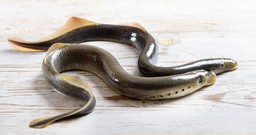
© Shutterstock. Kuvan käyttö sallittu vain osana e-Oppi Oy:n oppimateriaalia.

© Shutterstock. Kuvan käyttö sallittu vain osana e-Oppi Oy:n oppimateriaalia.
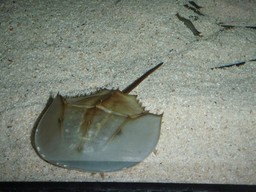
© Simo Veistola ja e-Oppi Oy
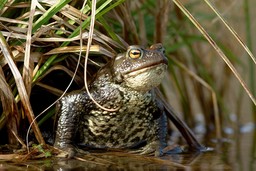
© Oskari Härmä ja e-Oppi Oy
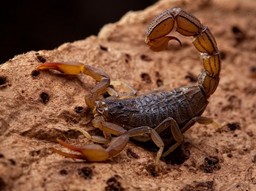
© Shutterstock. Kuvan käyttö sallittu vain osana e-Oppi Oy:n oppimateriaalia.
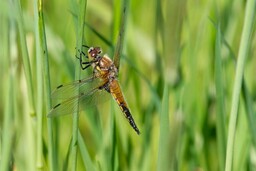
© Oskari Härmä ja e-Oppi Oy
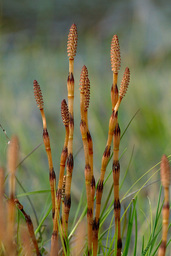
© Oskari Härmä ja e-Oppi Oy

© Oskari Härmä ja e-Oppi Oy
16.5 Gallery: The Mesozoic era
16.6 Gallery: The Cenozoic era
16.7 The history of life - The lake
Although millions of species have become extinct over the course of life's history, some species have always survived. Echoes of these species can still be found, even when one looks at a nearby lake.
The very first organisms were bacteria and archaea. As prokaryotic organisms, they consisted of only one cell which had no nucleus or specialized organelles. More complex cell structures emerged as bacteria and archaea cells were combined. For example, the chloroplasts of plant cells were originally photosynthetic bacteria that began to live inside other cells. Protists are primitive unicellular organisms. They are not fungi, animals, or plants.

The traditional categorization of living organisms.
Cyanobacteria are among the oldest organisms one can see when studying a lake. These photosynthetic bacteria emerged over 3,5 billion years ago. They were among the first organisms that could produce energy from sunlight using photosynthesis. As a result of photosynthesis, oxygen was gradually introduced into the atmosphere.

Cyanobacteria are photosynthetic bacteria.
Our lakes are home to a large variety of microscopically small unicellular algae and protists. Their cells are more highly developed than those of bacteria, as they contain nuclei and organelles. All multicellular organisms, such as plants and animals, have descended from these kinds of organisms.
Plants moved to land before animals could. The oldest fossils of land plants date back to over 400 million years ago. They were a type of moss that would grow in shallow shore water. Plants diversified and grew in size drastically during the Carboniferous period. During this time, the shores of Finnish lakes were dominated by large fern forests.
Most species that inhabit our lakes are invertebrates. Many groups of invertebrates are quite old. For example, zooplankton such as water fleas have existed for over 600 million years.
Flying insects developed during the same time as land plants grew more common. Dragonflies are among the oldest insect groups one can see in a lake. They developed 300 million years ago.
Fish are the earliest group of vertebrates. Most fish that can be found in Finnish lakes belong to the group of bony fish. Their fossils have been dated back over 450 million years.
Amphibians were the first vertebrates to move to the land some 400 million years ago. However, although they could live on the land, their reproduction was still dependent on water environments. Reptiles were the first vertebrates that could reproduce on dry land.
Angiosperm or flowering plants are a relatively new group of plants that emerged under 65 million years ago. Most of the plants you see on the lake shore are angiosperms. During the same time as angiosperms developed, the animal kingdom diversified through birds and mammals.
16.8 How do species evolve?
In the wild, species are constantly changing, although it is usually difficult to see the change because this happens very slowly. The basis for the evolution of species are mutations that occur in the genomic DNA of an organism. This is constantly happening in all organisms. Most of these mutations are repaired or insignificant. However, some mutations persist and affect the survival and progeny of individuals.
The picture below shows a white peacock. It has a mutation in its genome that prevents the development of coloured feathers. When the mutation is also present in the germ cells, it will be passed onto offspring.

The peacock's feathers do not produce colour pigment as a result of a genetic mutation.
Harmful mutations disappear because individuals that carry the mutation reproduce poorly. If the mutation is favorable, e.g. protects the organism against predator or helps them survive the winter, it will be passed on to the next generation. In this way, species become slightly different from generation to generation. The elimination of harmful traits and the passing on favourable traits to the next generation is called natural selection. Over time, this process allows organisms to adapt to their environment.
How can new species arise from existing species? For species to separate from one another, different reproductive barriers are formed. These barriers prevent the mating between two species or the reproduction of viable and fertile offspring between two spece. This may happen, for example, if one part of a previously unified population is isolated from the other parts of the populations. As there is no contact between these two populations, they can then gradually evolve in different directions. Over time, the differences become so great that individuals of different populations can no longer reproduce with each other. When this happens, a new species has emerged.
16.9 Terminology
- Evolution is the gradual development of species as the result of natural selection.
- A fossil is the remains of an ancient organism.
- A mutation is a change in an individual's genome.
- Natural selection is a phenomenon where the fittest individuals reproduce most effectively.
- Extinction is a phenomenon where a species disappears completely.
- Archaea and bacteria are primitive, unicellular, prokaryotic organisms.
- Eukaryotic organisms are an evolutionary group that consist of protists, plants, animals, and fungi. Their cells have nuclei and specialized organelles.
- Cyanobacteria are water-dwelling bacteria capable of photosynthesis.
- Angiosperm plants or flowering plants reproduce via flowers. Most plants one can see in Finnish nature are angiosperms.












